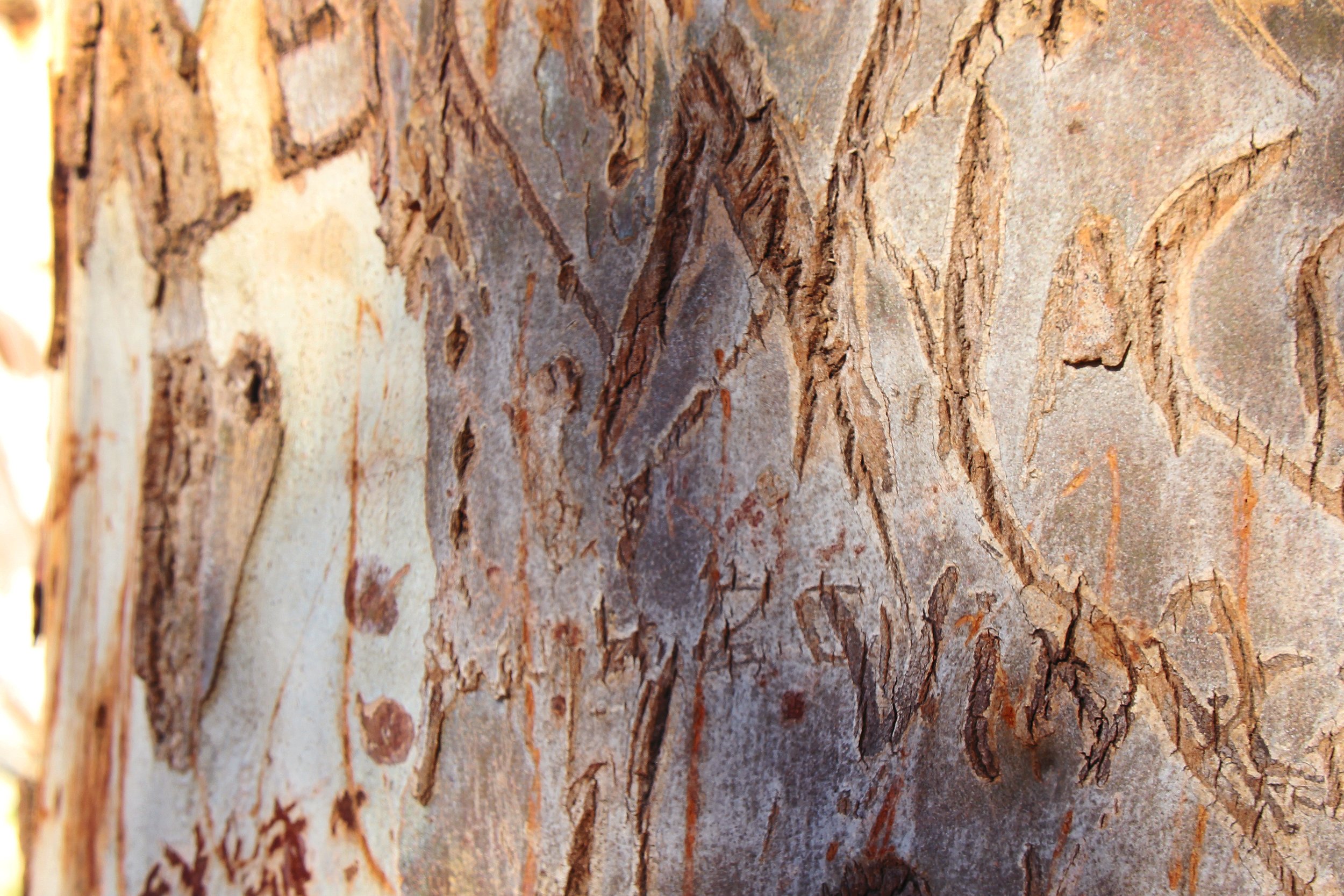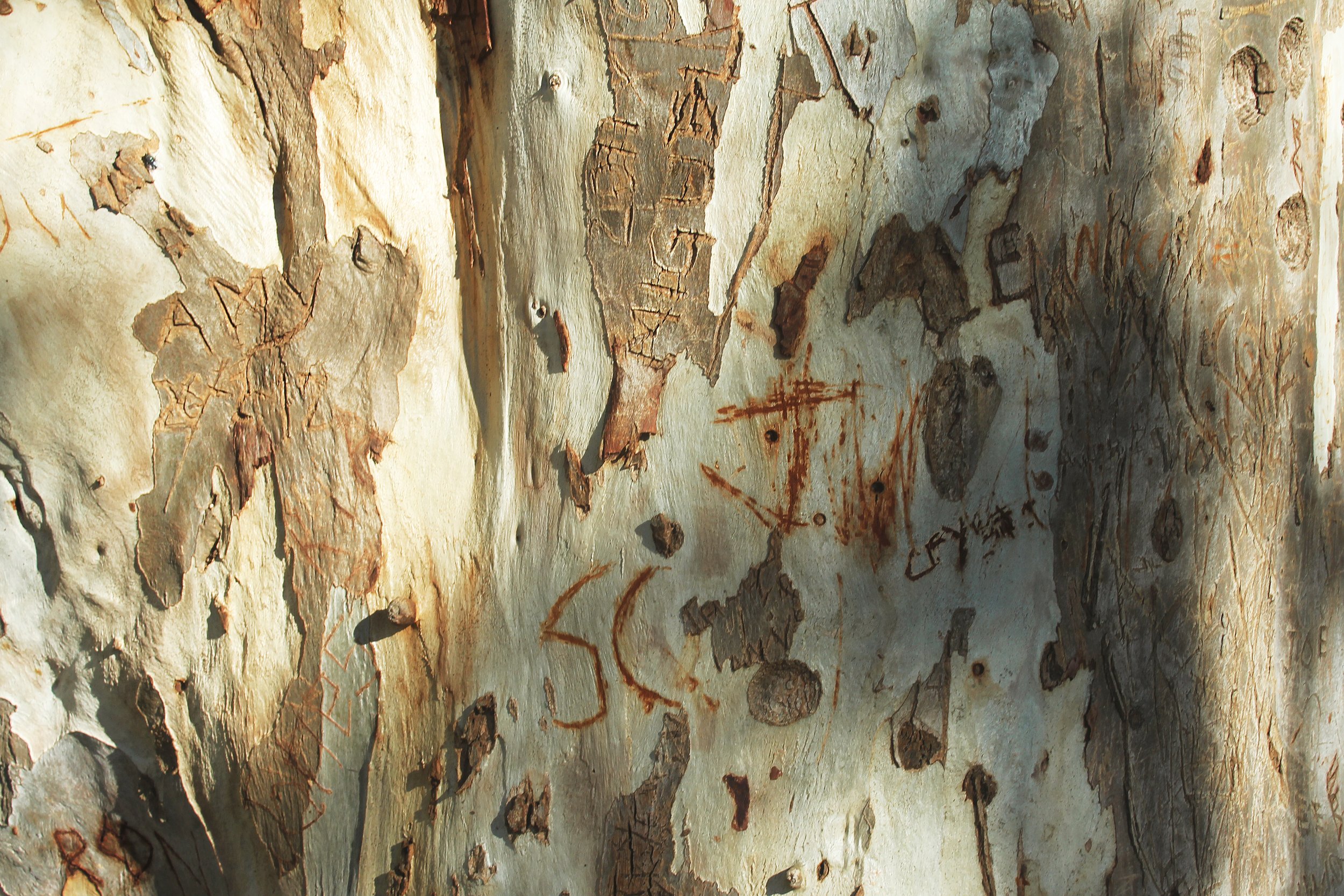DE-SCROLL
De-Scroll explores ‘text’ inscribed on a solitary eucalyptus tree. This appears to be the only tree with ‘text’ inscribed all over its bark probably due to its proximity to the main foot path that cuts across the valley.
The smooth wide trunk appears to invite strollers to inscribe their messages and to document their presence in the valley. Like a book, the aged eucalyptus imbricates the story of the place with the stories of the visitors.
‘Reading frees itself from the soil that determined it. It detaches itself from that soil’ - De Certeau (1984).
De-Scroll, 100 bark sculptures, 2015
Bark layers are like palimpsests - repositories of ‘text’ accumulated over a period of time. In this case natural and cultural ‘texts’ are juxtaposed together. The material is intriguing – fragile, textured, stained and leathery. Bark is mundane and rich, soft and brittle, moist and dry, light and dark. The more I held it in my hands and looked hard at it the more it appeared to gain the ability to communicate.
Some sculptures have a smooth texture, others are rougher, more elaborate or seem better ‘preserved’. A number of bark scrolls appear to be more loaded with ‘text’; others are leaner. Some of them bear traces of stains, as if they had been buried or ensconced somewhere deep beneath the ground for ages. The peeling crust and the cracks in the bark appear to reveal further layers of ‘text’.
'We’re tired of trees’; ‘there exist tree or root structures in rhizomes; conversely, a tree branch or root division may begin to burgeon into a rhizome’ - Deleuze and Guattari (1987) argue.
De-Scroll created a smooth space that allowed the ‘text’ to move in all directions; it mirrored the valley, imbricating multiple possibilities, streams, flows, connections and variations.
De-Scroll, National Library Valletta, Malta, 2015






















